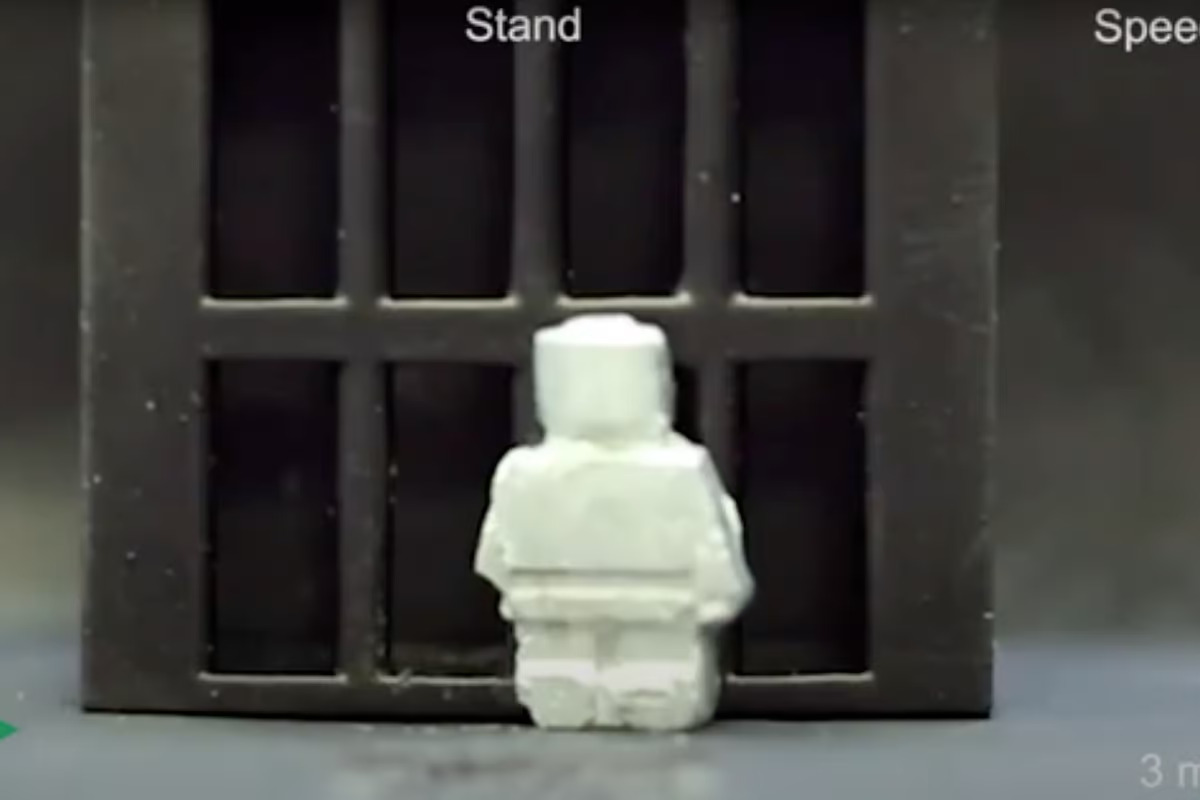 A humanoid “robot” made of a phase-change material shifts from solid and liquid to escape jail, in just one demonstration of the new tech. Wang And Pan et al
A humanoid “robot” made of a phase-change material shifts from solid and liquid to escape jail, in just one demonstration of the new tech. Wang And Pan et al
–
Robots usually come in two flavors – there are the traditional ones that are hard and strong, but not particularly flexible. And then there are soft robots, which are more flexible but not as strong. For the new study, researchers at Carnegie Mellon University and the Chinese University of Hong Kong developed a new type of robot that combines the best of both worlds.
The new robots are made of what the team calls magnetoactive phase transitional matter (MPTM) – in English, that means stuff that can switch between liquid and solid forms through exposure to magnetic fields. The key ingredient is gallium, a metal that has a very low melting point of just under 30 °C (86 °F), with magnetic particles embedded in it.
The idea is that the MPTM robots remain solid at room temperature, and when exposed to an alternating magnetic field they begin to move courtesy of the embedded particles. A more focused magnetic field heats up the particles to melt the robot into its liquid form. When it cools down, it hardens back into a solid.
–
The researchers demonstrated a wide range of possible tasks that this system could be used for. In one of the most dramatic videos, a humanoid “robot” stands in a jail cell, pacing back and forth thanks to a magnet being dragged along underneath. To bust out of prison, the robot then melts into a liquid and oozes between the bars like the T-1000 Terminator, before re-solidifying on the other side. At the end of the video it takes on its human form again, but don’t be too impressed – the team had to manually recast it in a mold and put it back.
In other tests, the team carefully controls the magnetic fields in different areas to guide the robots through obstacle courses by crawling along the ground, jumping over moats, climbing walls, and pushing objects around. The robots can even split in half to send each piece off on its own job, before bringing them back to merge together again.
In more practical use cases, two small robots push an LED into place in an electronic circuit, before positioning themselves over the connections and melting to effectively solder it. In another video, a square of the stuff removes a foreign object from a model stomach by softening, engulfing the object, hardening, then scurrying out. The material could even make for liquid screws by melting into a socket and solidifying to hold two pieces together.
Of course, all this is just proof of concept work so far, and arguably there are far easier ways to do all these tasks. Nevertheless, it’s an interesting idea, and one that could open up new applications with further investigation.
The research was published in the journal Matter.
Source: Cell Press via Eurekalert
–























